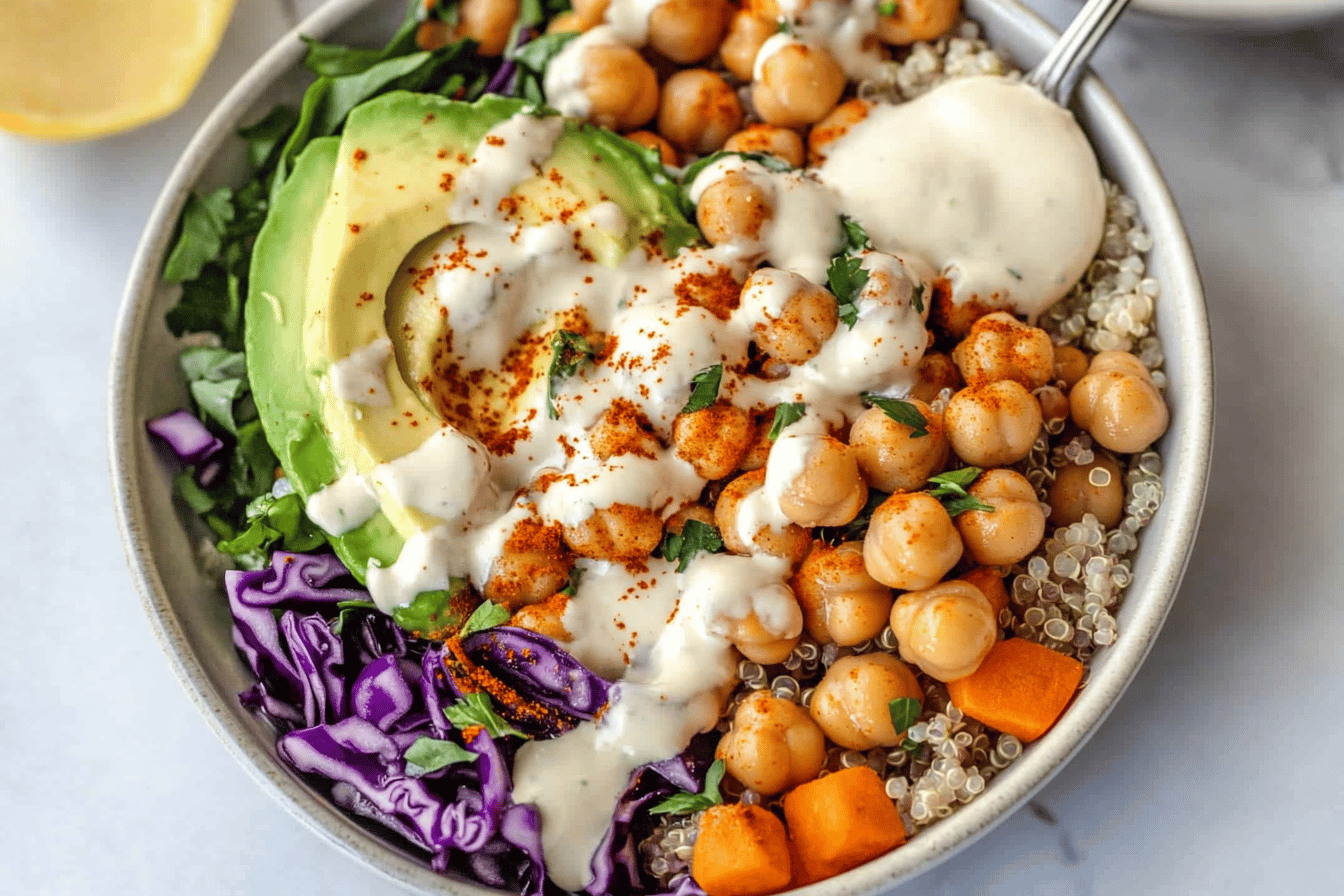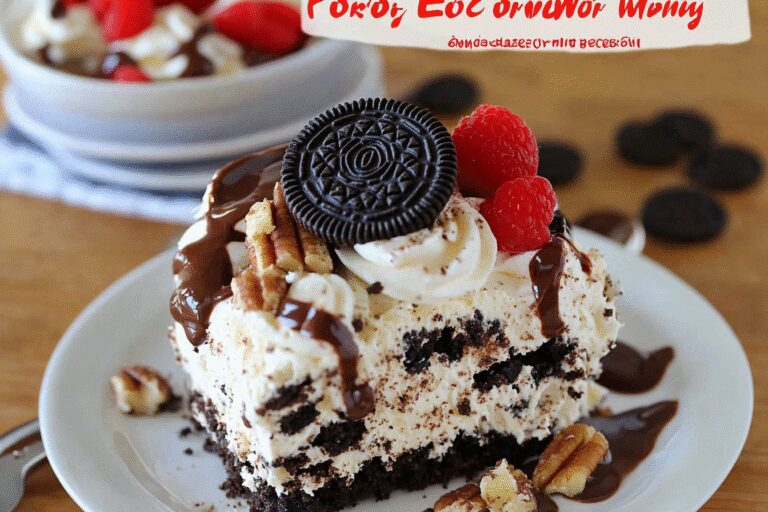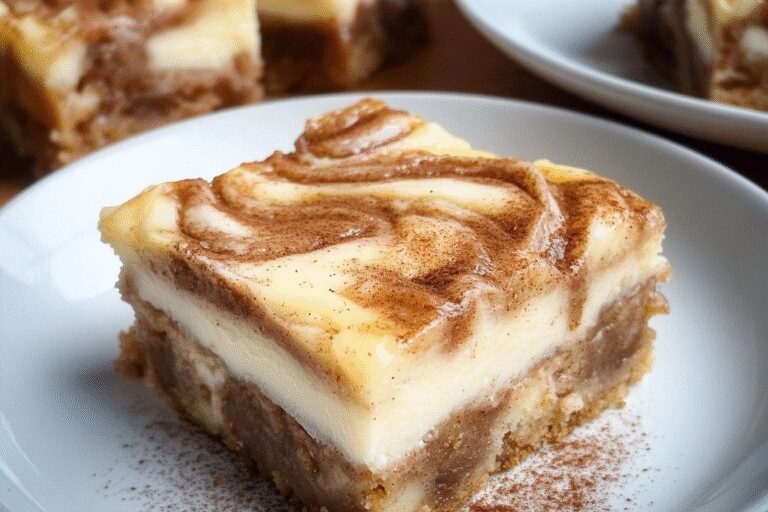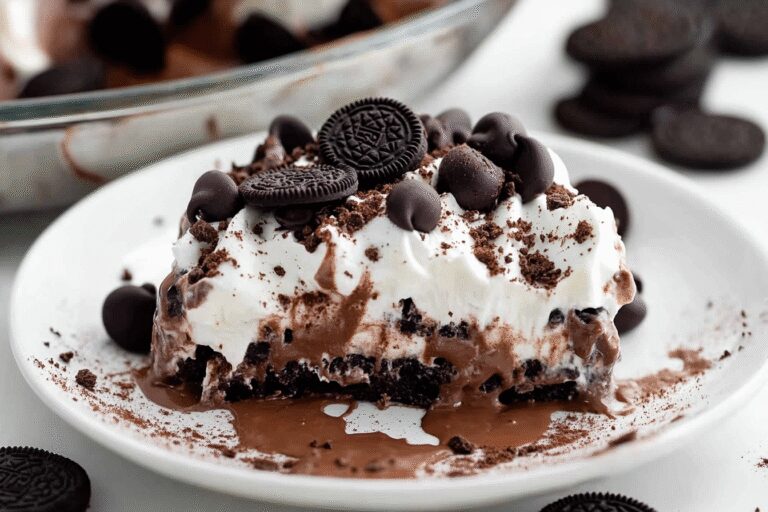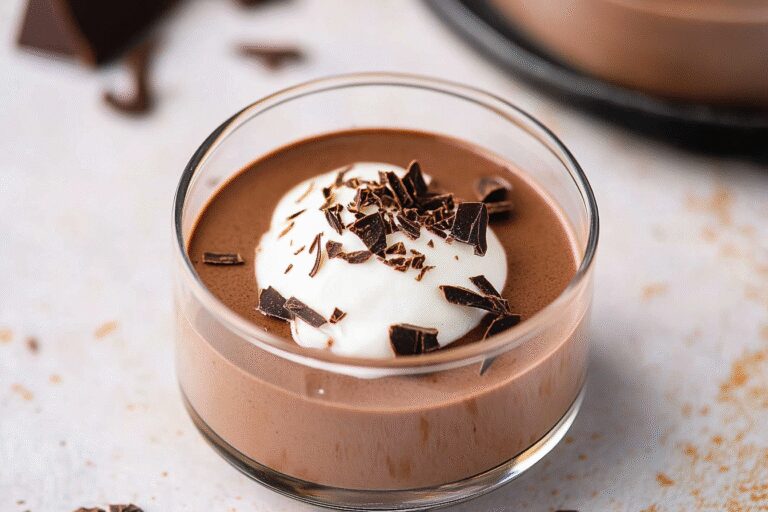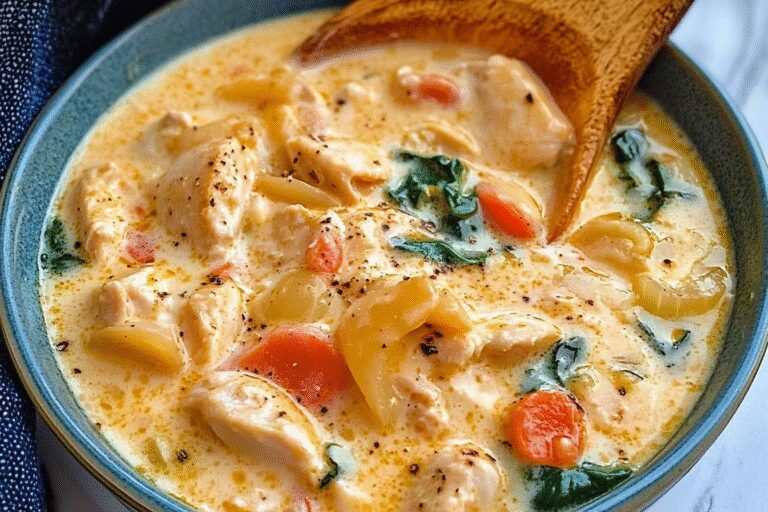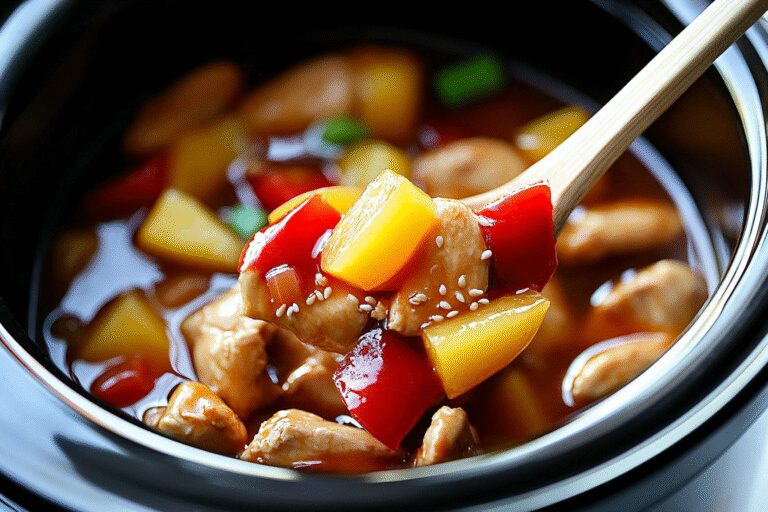Buddha Bowl Recipe
Introduction
Buddha bowls are a delightful and versatile meal option that combines nutritious ingredients in a single, colorful bowl. These bowls typically feature a mix of grains, vegetables, proteins, and flavorful dressings, making them a healthy and delicious choice for any meal of the day. Whether you’re a seasoned cook or just looking for an easy and tasty recipe, Buddha bowls are sure to become a favorite in your kitchen.
Detailed Ingredients with Measures
The key to making a great Buddha bowl is combining fresh, wholesome ingredients that offer both nutrition and flavor. Here’s what you might include in a classic Buddha bowl:
– 1 cup cooked quinoa
– 1 cup roasted sweet potatoes
– 1 cup steamed broccoli
– 1/2 cup shredded carrots
– 1/2 cup chickpeas, drained and rinsed
– 1/4 cup sliced avocado
– 1-2 tablespoons tahini dressing
– A pinch of salt and pepper for seasoning
– Optional: Top with fresh greens, sesame seeds, or a squeeze of lemon for added flavor
Feel free to mix and match ingredients based on your preferences or what you have in your pantry. Buddha bowls are all about customization.
Prep Time
Preparing the ingredients for a Buddha bowl is straightforward, even for those with minimal cooking experience. Washing, chopping, and organizing the vegetables, as well as cooking grains like quinoa or rice, are relatively quick steps. Prep time typically takes about 15-20 minutes.
Cook Time, Total Time, Yield
For elements that require cooking, such as roasting sweet potatoes or steaming broccoli, the cook time is generally around 20-25 minutes, depending on your method. With preparation and cooking combined, you can have your Buddha bowl ready in about 40-45 minutes. This timing makes it an excellent option for a nutritious yet efficient meal. Most Buddha bowl recipes yield around 2-4 servings, depending on portion sizes and ingredients used.
Enjoy experimenting with different combinations of grains, vegetables, proteins, and dressings for a completely personalized Buddha bowl experience.
“`html
Detailed Directions and Instructions
Step 1: Cook the Base
To start, prepare your base. Cook your choice of grains such as rice, quinoa, farro, or couscous according to package instructions. Once done, set it aside to cool slightly while preparing the rest of the ingredients.
Step 2: Prepare the Proteins
Select a protein such as roasted chickpeas, baked tofu, cooked chicken, or salmon. For plant-based options like chickpeas or tofu, season them with spices or marinades of your choice and cook in the oven or on the stovetop until golden and flavorful.
Step 3: Chop and Prep Vegetables
Wash and chop your vegetables. Use a combination of raw, roasted, or sautéed veggies. Common options include kale, spinach, carrots, cucumber, bell peppers, red cabbage, avocado, or roasted sweet potatoes.
Step 4: Assemble the Bowls
In a large bowl or deep plate, start with your grain base. Add the cooked protein and vegetables on top, organizing them side by side in a visually appealing manner for easy access to each ingredient.
Step 5: Make the Dressing
Prepare a flavorful dressing such as a peanut sauce, tahini dressing, yogurt-based sauce, or a simple vinaigrette. Combine the ingredients in a bowl or jar and whisk until smooth. If needed, adjust seasoning with extra salt, pepper, or added lemon juice.
Step 6: Dress and Garnish
Drizzle your desired amount of dressing over the assembled bowl. Garnish with optional toppings such as sesame seeds, chopped nuts, fresh herbs, or sprouts.
Step 7: Serve and Enjoy
Serve immediately or store in an airtight container in the refrigerator if preparing for meal prep. If storing, keep the dressing separate until ready to eat to maintain freshness.
Notes
Note 1: Grain Substitutions
Feel free to use any grain or base of your choice. Brown rice, white rice, or cauliflower rice are excellent, low-carb substitutes for quinoa.
Note 2: Protein Preferences
The bowl is versatile and works with any protein. Adjust seasonings to match your dietary preference, or leave out protein altogether for a lighter option.
Note 3: Preparing in Advance
These bowls are great for meal prep. Store grains, proteins, and vegetables separately to avoid sogginess, and combine them just before eating.
Note 4: Dressing Tips
Customize your dressing to fit the flavors of the bowl. For a creamier texture, add a dollop of Greek yogurt or unsweetened non-dairy yogurt.
Note 5: Adjust for Dietary Restrictions
This recipe is highly adaptable. Substitute gluten-free grains or plant-based proteins to meet dietary needs without compromising flavor.
Note 6: Serving Size
This recipe makes a single serving or can be doubled or tripled for meal prep or family-sized portions. Adjust ingredient quantities as needed.
“`
Cook Techniques
How to assemble a Buddha Bowl
To assemble a Buddha bowl, start by layering a grain of your choice, such as rice, quinoa, or farro, as the base. Add an assortment of cooked and raw vegetables to ensure a mix of textures and flavors. Incorporate a protein source like tofu, tempeh, chickpeas, or an egg for balance. Finally, drizzle with your favorite sauce to tie together all the flavors.
How to prepare the protein
Depending on your chosen protein, you can bake, sauté, or air-fry for the desired texture. For tofu or tempeh, marinate them briefly in the sauce or seasoning of your choice before cooking to enhance their flavor.
Cooking grains for a Buddha Bowl
Rinse your grain of choice under cold water before cooking to remove excess starch, which prevents it from becoming gummy. Use a water-to-grain ratio according to the type of grain and cook until tender. Fluff the grains with a fork once cooked, and let them cool slightly before adding to your bowl.
Preparing raw veggies
Wash and slice raw vegetables thinly for a cleaner presentation and better mouthfeel. Use a vegetable peeler or mandoline for uniform slices. Mixing a variety of veggies provides contrast and color to the bowl.
Roasting vegetables
Cut veggies into bite-sized pieces, toss them lightly in oil, and season with salt and pepper. Roast in a preheated oven at around 400°F until they are tender and slightly caramelized, usually 20-25 minutes.
Cooling components
For added flavor contrast, mix fresh elements like avocado, sliced cucumber, or leafy greens like spinach or arugula after cooking the other components.
Making a flavorful dressing
Whisk together ingredients like tahini, soy sauce, garlic, ginger, lemon juice, or water until smooth. Adjust consistency with water, and season with salt or sweetener to balance the flavors.
FAQ
What is a Buddha bowl?
A Buddha bowl is a wholesome meal consisting of grains, proteins, fresh and cooked vegetables, and a flavorful dressing. It is served in a single bowl, making it visually appealing and balanced.
Can I make a Buddha bowl ahead of time?
Yes, Buddha bowls can be prepped ahead of time. Store each element separately to maintain freshness and assemble right before serving. Consider keeping the dressing in a separate container to avoid sogginess.
What are the best grains to use?
Quinoa, rice, farro, and couscous are some of the best grains for Buddha bowls. Choose based on your preference or dietary restrictions.
What proteins work best?
Some great protein options include tofu, tempeh, chickpeas, beans, eggs, grilled chicken, or even smoked salmon.
Can I use frozen vegetables?
Yes, frozen vegetables can be used for convenience. Roast or sauté them for the best flavor and mix with fresh vegetables for balance.
Are Buddha Bowls vegan-friendly?
Yes, Buddha bowls can easily be made vegan-friendly by using plant-based proteins like tofu, tempeh, or beans and choosing dairy-free sauces.
How do I keep the bowl balanced?
Aim for a balance of grains, proteins, veggies, and fats. A good rule of thumb is 25% each of grains and proteins, 40% vegetables, and 10% healthy fats from sources like avocado, nuts, or dressing.
What sauces work best?
Common choices include peanut sauce, tahini, lemon-dijon dressing, or any creamy or tangy dressing that complements the flavors of the bowl components.

“`html
Conclusion
Buddha bowls are a versatile, nourishing, and delicious meal option that can be customized to suit anyone’s taste preferences and dietary restrictions. They are perfect for meal prepping, busy weeknight dinners, or a satisfying lunch. With a balance of grains, proteins, vegetables, and flavorful sauces, buddha bowls are a simple yet wholesome way to enjoy a wide variety of nutrients in one bowl.
More recipes suggestions and combination
Quinoa and Chickpea Buddha Bowl
Combine cooked quinoa, roasted chickpeas, fresh greens, cherry tomatoes, cucumber, and avocado. Top with a tangy lemon-tahini dressing for extra flavor.
Sweet Potato and Black Bean Buddha Bowl
Roast sweet potatoes, add cooked black beans, brown rice, sautéed kale, and corn. Drizzle with a zesty lime-cilantro dressing to bring all the flavors together.
Spicy Tofu and Peanut Sauce Bowl
Add crispy, spiced tofu to a mix of rice noodles, shredded carrots, red cabbage, edamame, and fresh cilantro. Toss with a creamy peanut dressing for a satisfying bowl.
Mediterranean-Inspired Buddha Bowl
Use quinoa or farro as your base, then add roasted eggplant, hummus, cucumber, olives, cherry tomatoes, and a sprinkle of feta cheese. A drizzle of olive oil and balsamic vinegar ties it all together.
Rainbow Veggie and Sesame Sauce Bowl
Use a mix of steamed or roasted vegetables like broccoli, bell peppers, purple cabbage, and carrots. Combine with brown rice or soba noodles and top with sesame ginger dressing.
“`

